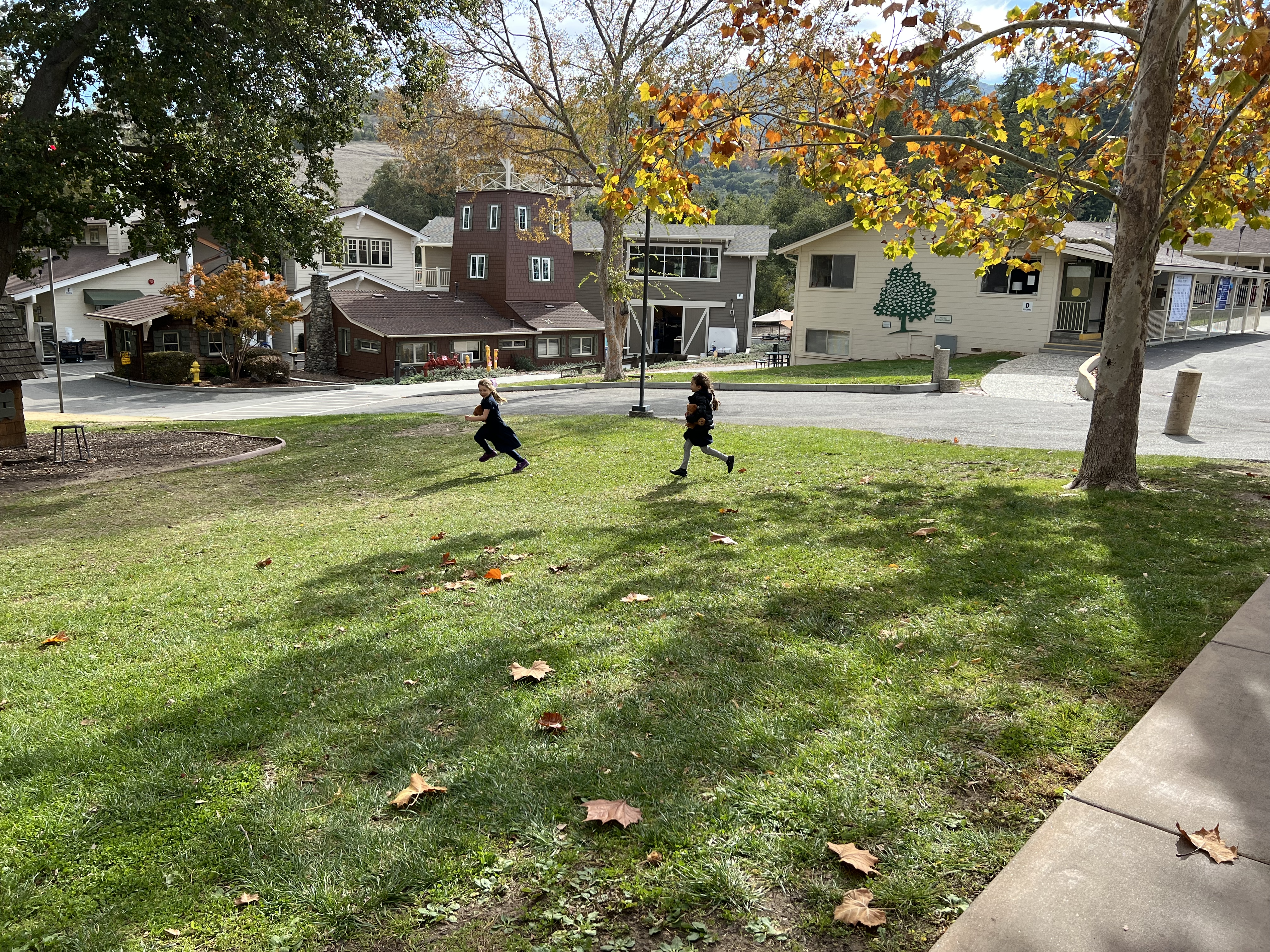Contributed by: Head of Lower School Colleen Schilly.
As we enter into the first three weeks of school, children and adults in the Hillbrook community are beginning to find a rhythm in the routine and expectations of the new school year. For elementary age students, the first six weeks of school are a pivotal time during which we set the tone for the year to come. At Hillbrook, we believe that by investing in the following five things children are more available to learn, meet challenges, and reach their potential during the rest of the year. We spend these weeks:
things children are more available to learn, meet challenges, and reach their potential during the rest of the year. We spend these weeks:
- Establishing a safe and caring community that is connected and joyful.
- Familiarizing children with all their learning environments, both indoors and outdoors.
- Teaching and modeling expectations for the safe, respectful, and appropriate use of materials and tools for learning, exploration, and play.
- Co-creating expectations for how we learn and resolve problems.
- Dreaming about what we hope to gain from the year ahead.
As teachers and children begin the journey of this year together, you may notice the above five things coming to life around campus and in the daily experiences of each child in the following ways:
Walls & Bulletin Boards: You will see these previously blank spaces in classroom begin to shine with student work, dreams, and strategies for learning. Collaborative art projects, self portraits, writing pieces and more will begin to show that students are actively involved in creating a beautiful learning space that is representative of their unique personalities and the skills and talents of their collective community.
Materials: In some spaces you may notice shelves that once were empty filling up with a variety of tools for learning and creating: drawing materials, glue, scissors, types of paper, other art supplies, and more. Teachers spend time with children exploring each material and the possibilities it can have for creating, sharing, and showing about what you are learning. As new materials are introduced, they are added to shelves and storage spaces so children can access them.
Anchor Charts: Also on the walls you will observe a variety of charts and posters that are made by teachers and students during the school day. An anchor chart’s purpose is to anchor a student in some key principles, strategies, or procedures for a specific skill or activity. This might be everything from strategies for choosing a “just right” independent reading book to prompts for aski ng meaningful questions during discussions. These charts serve as reminders of important learning that has already happened, and as reminder tools for students to return to as they continue to practice new skills.
ng meaningful questions during discussions. These charts serve as reminders of important learning that has already happened, and as reminder tools for students to return to as they continue to practice new skills.
Hopes & Dreams: As children become familiar with routines and the pace of the school day, they will start to think about what they want to learn and do in the year ahead. With the support of their teacher and classmates they will generate and document goals (hopes and dreams) for their exploration. This process continues to solidify the warmth and support of the classroom community as children share their hopes with one another.
Classroom/Community Rules: Discussing and generating hopes and dreams ultimately leads to important conversations about what everyone in the community needs in order to achieve their dreams. Shared expectations for the learning community are generated with a high degree of student involvement. When students are invested in the rules and guidelines they have created for their learning community they are able to support one another and understand the impact of consequences with greater clarity.
Morning Meeting Routine: Your child begins each day with a morning meeting in his/her class and/or grade level. The Morning Meeting builds community, begins the day with a positive tone, generates excitement about learning, and improves academic and social skills. Every Morning Meeting begins with a greeting where each student is greeted by a classmate and has the opportunity to greet another. In this space every community member is recognized by name and recognizes others. Other components of Morning Meeting can include time for student sharing, songs, games, and other activities that reinforce academic skills, build unity, and provide a structured setting where children learn how to cooperate and solve problems. The Morning Meeting is the springboard from which children and teachers dive into the challenges and opportunities that await them during the school day!
At Hillbrook, the transition that occurs during the first six weeks of school is one of the pivotal ways we ensure that each child is known, respected, and valued as an individual so they can deeply engage in their learning through self-discovery, imaginative thinking, creative problem solving, laughter, and friendship.
